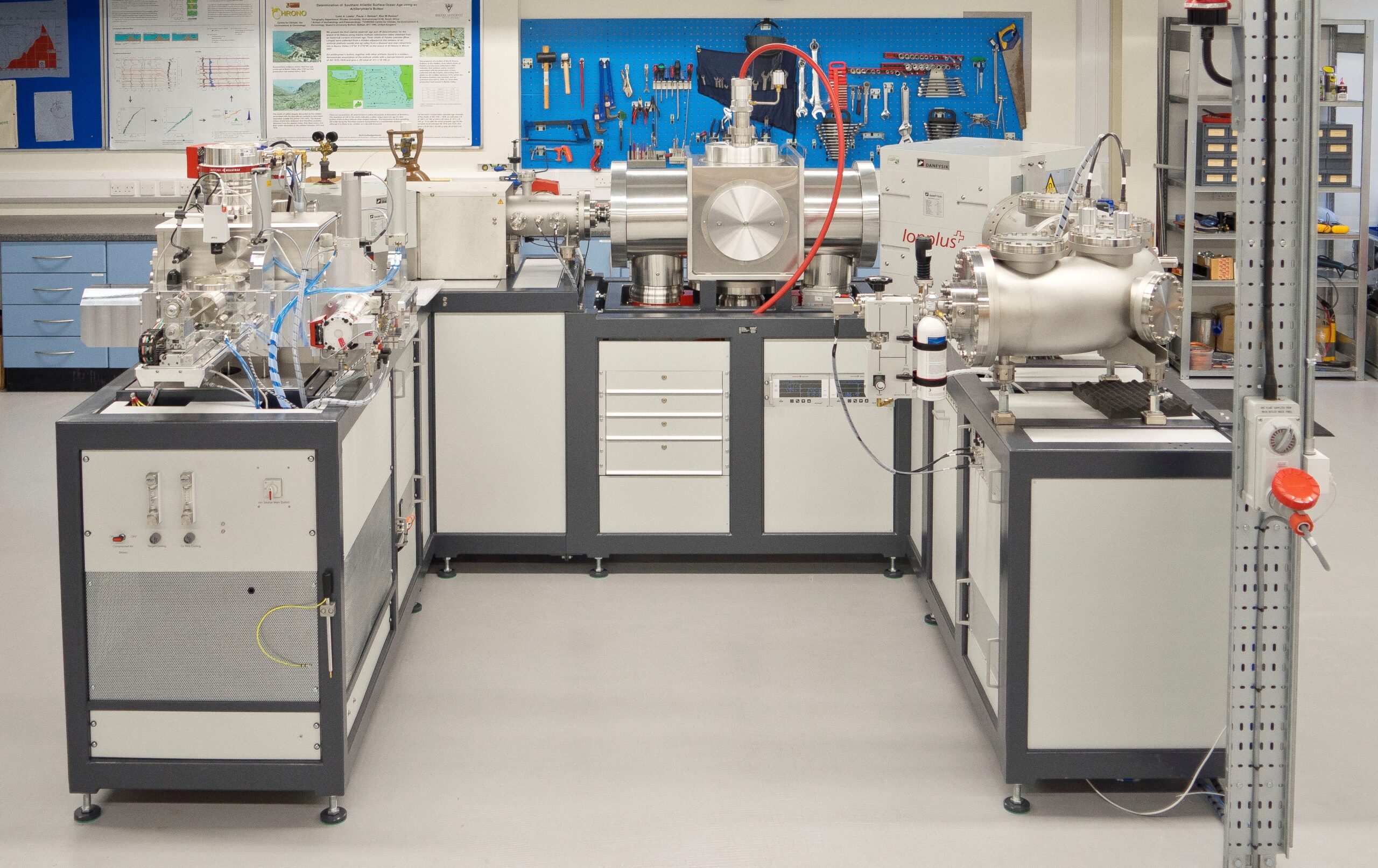Advantage of AMS
AMS has considerable advantage over radiometric (beta counting) methods such as gas proportional counting (GPC) and liquid scintillation (LS) counting, for example:
- Smaller sample size (e.g. for charcoal, 5mg for AMS versus 5-20g for LS, GPC)
- Easier to obtain enough sample material
- Closer association to an archaeological event
- For sampling, this means less damage to artefacts
- Shorter measurement times (e.g. 10-15 minutes for AMS versus days to months for LS, GPC)
Principles of Operation – An AMS distinguishes between molecules of similar mass by accelerating them to very high velocities: this is why it is referred to as Accelerator mass spectrometry.
The method used to achieve this acceleration most often involves a tandem accelerator (two stages of acceleration), as is the case for our AMS at 14CHRONO, an Ionplus Mini Carbon Dating System (MICADAS).
This machine is used to measure the relative abundances of the carbon isotopes, 14C, 13C and 12C. To carry this out, samples that have been converted to graphite are pressed into a holder (called a ‘target’) and positioned on a magazine of 40 targets. The magazine (containing unknowns, backgrounds, standards and secondary standards) is then loaded into the (ion) source. During running, a target is bombarded with caesium (Cs+) ions and negatively charged carbon atoms (C–) are produced. These negative ions are accelerated out of the source and down the beamline.


The beamline has three changes in direction, each associated with either an electrostatic analyser (ESA) or a magnet that can be tuned to alter the alignment/direction of the beam.
The principal objective of the AMS is to optimize detection of the rare 14C isotope while minimize problematic detection of stray, interfering particles; hence each major steering component is designed and tuned to remove unwanted molecules from proceeding further down the line, while steering the maximum possible quantity of 14C to the detector. Generally, electrostatic analysers are used to filter out particles that do not have the correct energy and magnets filter out particles of unsuitable mass.
A key element of the beamline is the main acceleration region (positioned inside the accelerator tank, a chamber held under high vacuum).
Negative ions, exiting the injection magnet are accelerated towards a positive potential, held at 200 kV, at the centre of this region. There, they collide with helium atoms (stripper gas) and, as well as any unwanted molecules undergoing dissociation or breakup, electrons get ‘stripped’ from the atoms of interest, converting them from negative to positive ions. Now positively charged, the beam is further accelerated down the beamline (away from the positive potential) to where the dissociated particles can be filtered out by the analysing magnet; this permits only isotopes of interest to continue on and be measured either at Faraday cups (13C, 12C) or in a gas ionization detector (14C) at the end of the beamline. Of note, in an AMS it is not the absolute number of the rare 14C isotope that is measured to provide the date of a sample. Instead, the ratio of 14C to the stable isotopes 13C and 12C are measured and the age is determined based on how these ratios compare with those of known standards (OX2).


Running a magazine- The structure of our magazine is typically the following: a typical magazine has four run groups: a tuning group followed by four groups of seven unknowns separated by OX2 standards.
The tuning run group consists of two blanks, OX2 standards, and two pairs of secondary standards. Measurements on targets from this group are used to evaluate if the AMS is running satisfactorily. Each target is run for at least 10 x 2.5 minute exposures. A typical exposure of the OX2 standards produces approximately 45,000 counts at the detector.
The unknowns in each run group are normalized to the nearest-in-time runs of bracketing OX2 runs to form the ratio to standard. For more details on how analysis is carried out see here.



 Submit Sample
Submit Sample